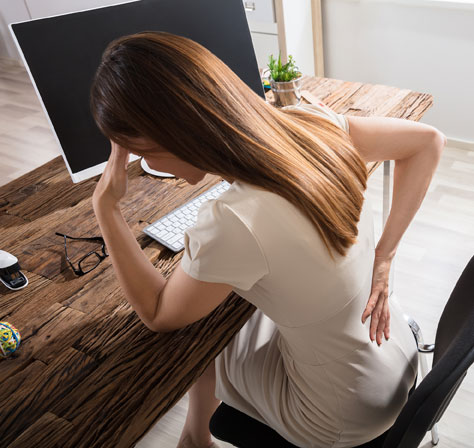
At some point in your life, you are likely to experience lower back pain. Yet, there is a big difference between temporary pain that goes away in a matter of days and chronic pain, which can last months or a lifetime. Depending on the severity of the pain, problems with the lower back can prevent someone from moving freely and leading an active lifestyle.
Signs of Back Pain
Discomfort may be characterized by muscle aches, shooting or stabbing pain, or radiating pain down the leg that worsens with bending, lifting, standing or walking.
Back pain can be caused many conditions, including these common ailments:
- Muscle/Ligament Strain: Back muscles can be injured from heavy lifting or a sudden awkward movement.
- Bulging/Ruptured Disks: Your disks act as cushions between the bones in your spine. If the soft material inside a disk bulges or ruptures, it may press on a nerve.
- Arthritis: Can lead to a narrowing of the space around the spinal cord, a condition called spinal stenosis.
- Skeletal Irregularities: Scoliosis, a condition in which your spine curves to the side.
- Osteoporosis: When vertebrae develop compression fractures, the bones may become porous and brittle.
Lifestyle factors can also put you at risk for lower back pain. These include:
- Age takes its toll on our backs over the years. No matter how healthy you are, back pain is often inevitable.
- Lack of exercise can put your back at risk for a number of aches and pains.
- Excess weight around the midsection puts more stress on your spine.
- Poor lifting techniques, whether it be in the gym or on the job, can lead to chronic back pain.
If your back pain lasts longer than three months, it may be the sign of a chronic condition. Expedite the treatment process with Direct Access to physical therapy. Learn how you can see a PT without referral and be on the road to recovery today!

